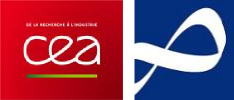Multicomponent, multiwavelength benchmarks for source- and filament-extraction methods
Résumé
Modern multiwavelength observations of star-forming regions that reveal complex, highly structured molecular clouds require adequate extraction methods that provide both complete detection of the structures and their accurate measurements. The omnipresence of filamentary structures and their physical connection to prestellar cores make it necessary to use methods that are able to disentangle and extract both sources and filaments. It is fundamentally important to test all extraction methods on standard benchmarks to compare their detection and measurement qualities and fully understand their capabilities before their scientific applications. A recent publication described getsf, the new method for source and filament extraction that employs the separation of the structural components, a successor to getsources, getfilaments, and getimages (collectively referred to as getold). This new paper describes a detailed benchmarking of both getsf and getold using two multicomponent, multiwavelength benchmarks resembling the Herschel observations of the nearby star-forming regions. Each benchmark consists of simulated images at six Herschel wavelengths and one additional derived surface density image with a 13″ resolution. The structural components of the benchmark images include a background cloud, a dense filament, hundreds of starless and protostellar cores, and instrumental noise. Five variants of benchmark images of different complexity are derived from the two benchmarks and are used to perform the source and filament extractions with getsf and getold. A formalism for evaluating source detection and measurement qualities is presented, allowing quantitative comparisons of different extraction methods in terms of their completeness, reliability, and goodness, as well as the detection and measurement accuracies and the overall quality. A detailed analysis of the benchmarking results shows that getsf has better source and filament extraction qualities than getold and that the best choice of the images for source detection with getsf is the high-resolution surface density, alone or with the other available Herschel images. The benchmarks explored in this paper provide the standard tests for calibrating existing and future source- and filament-extraction methods to choose the best tool for astrophysical studies.
Origine : Publication financée par une institution



